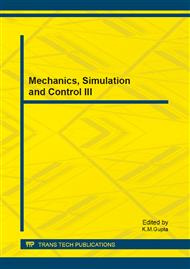[1]
Davenport, T. & J. Short, The New Industrial Engineering: Information Technology and Business Process Redesign, Sloan Management Review 31(4), 1990, pp.11-27.
Google Scholar
[2]
Morrow, M., Hazell, M. Activity mapping for business process redesign, Management Accounting, February, (1992).
Google Scholar
[3]
Michael Hammer, James Champy, Reengineering the Corporation: A Manifesto for Business Revolution, HarperCollins Publishers, (2001).
DOI: 10.1080/05775132.1994.11471789
Google Scholar
[4]
Dingwei Wang, A human - computer interactive approach based on activity - section analysis for BPR, Production Planning & Control, Vol. 11 No. 8 , 2000, p.789 – 796.
DOI: 10.1080/095372800750038391
Google Scholar
[5]
Mohsen Attaran, Exploring the relationship between information technology and business process reengineering, Information and Management, Volume 41 , Issue 5, 2004 , p.585 – 596.
DOI: 10.1016/s0378-7206(03)00098-3
Google Scholar
[5]
Davenport, T. H., Process Innovation: Reengineering Work through Information Technology, Boston: Harvard Business School Press, (1993).
DOI: 10.5465/ame.1993.9411302338
Google Scholar
[6]
Cai Li, Research on the Model of Process Reengineering in Chinese State-owned Enterprise, proceedings of international Conference on Management Science & engineering, (2001).
Google Scholar
[7]
Zhong Weizhu, The Design and Implementation of Container Terminal Logistics Control System, journal of WUHAN University of Technology (Transportation and Engineering), Vol. 30 No. 3, 2006. p.585 – 596.
Google Scholar
[8]
Zhen Hong, Conception of fourth generation port and implementation methods, Journal of Traffic and Transportation engineering, Vol. 5 No. 4, 2005. pp.90-95.
Google Scholar
[9]
Zhong Weizhu, Liu Zhenpeng etal. Developing Stratagem: Container Port Logistics MIS Model, Proceedings the First International conference on Logistics Strategy for Ports. Dalian Maritime University, 2004. pp.730-736.
Google Scholar
[10]
Chen Maoyuan, Container Terminal Business Management, Publication of Dalian Maritime University, ISBN 7-5632-1217-5, (2004).
Google Scholar
[11]
Richard M. Murray, Future Directions in Control in an Information-Rich World, IEEE Control Systems Magazine, 2003. 3.
Google Scholar
[12]
Zhong Weizhu, the Application of 2S (GIS+GPS) Technology in Container Port Logistics. Proceeding of FIC Integrated Logistics, NanYang University, Singapore. 2001. pp.277-280.
Google Scholar
[13]
Zhong Weizhu, The applying of Computer Data Communication Technology in container port, Journal of Tianjin College of Technology, Vol. 17, No. 3, 2001, pp.95-97.
Google Scholar
[14]
J. A. Fax, Information flow and cooperative control of vehicle formations. Proceedings of 15th IFAC Conference, 2002, pp.283-288.
Google Scholar
[15]
Sha Mei, Overview of research on modeling and simulation of container terminal logistics system, Journal of Shanghai Maritime University, Vol. 26 No. 1, 2005, pp.6-12.
Google Scholar
[16]
Zhong Weizhu, Study on Integrated CCCT and Container Terminal Production DPS, journal of WUHAN University of Technology (Transportation and Engineering), Vol. 31 No. 5, 2007, pp.857-859.
Google Scholar
[17]
Zhang Hailin. Jiang Zhibin, Rule Based Object-Oriented Petri Net Modeling and Analysis of Container Terminal Logistic System, Journal of Shanghai JIAOTONG University, vol. 41 No 2, 2007, pp.230-237.
Google Scholar


